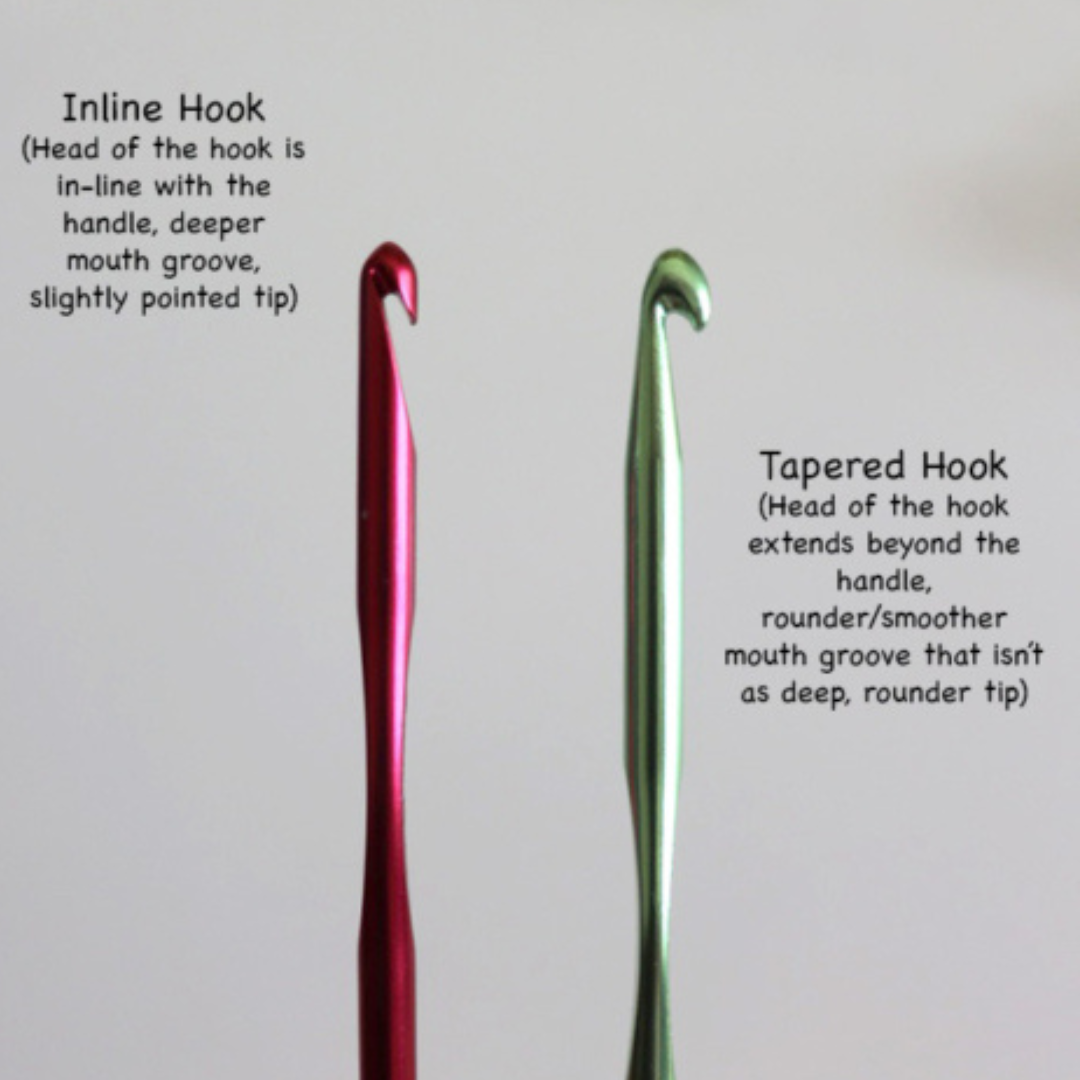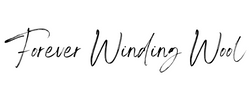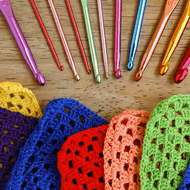The Different Types of Crochet Hook Ends - inline vs tapered
Posted by Kelly Holtsclaw on Apr 1st 2023
When it comes to crocheting, one of the most important tools you need is a crochet hook.But did you know there are two different types of crochet hook ends? Understanding the difference between inline and tapered hooks can help determine which type best suits your needs. In this blog post, we'll be discussing the different types of crochet hook ends - inline vs. tapered - so you can make an informed decision when selecting your next crochet hook. Read on to learn more about the differences between these two types of crochet hook ends!

Inline Crochet Hooks
Inline crochet hooks are a relatively modern style of crochet hook developed in the 1970s. They feature a straight, cylindrical shaft that tapers out at the end, and they are the most modern and efficient style of crochet hook available today.The most notable characteristic of an inline crochet hook is its lack of a defined “throat” or “lip” where the yarn is hooked onto the hook.This makes them easier to work with for some users, particularly those who are left-handed or have joint pain or other hand issues.Another unique fact about the development of the inline hook style is that it was developed by a professional crocheter, Denise Cooper, to provide increased comfort and control when crocheting.Because this type of crochet hook lacks the traditional throat that many traditional hooks have, there is less stress on the user's wrists and hands while crocheting, making it an ideal choice for people who experience pain while working with traditional styles of crochet hooks.
Tapered Crochet Hooks
Tapered crochet hooks are made from either wood or plastic, while inline crochet hooks are usually made from metal. Tapered crochet hooks are characterized by their rounded head, while the shaft of the hook gradually tapers down to a point.This is designed to provide greater control when working with thinner yarns and thread, as the tapered shape allows you to work with precision.Additionally, the rounded head of a tapered crochet hook helps to make it easier to pull the yarn through stitches without splitting it.Tapered crochet hooks also have a wide range of sizes available, from tiny steel hooks for working with thread to large plastic hooks for bulky yarns.
While there is some debate over who was the first to develop the tapered crochet hook design, there is evidence to suggest that a German inventor in the early 1800s had originally created the design for knitting needles.This same design was later adopted for crochet hooks and has been used ever since!
Which One Should I Use?
When it comes to choosing between inline and tapered crochet hooks, there is no definitive answer. It depends on the project type and the individual crocheter’s preference.Some may find one type more comfortable than the other, while others may prefer one for its size or shape.
In the US, inline crochet hooks are more popular among today’s generation.They tend to provide a more consistent stitch gauge, which is especially important when creating garments or other precision pieces. In Europe, however, tapered hooks are more common. The tapered design provides extra grip and allows the hook to slide through the stitches easily.
Ultimately, there is no right or wrong answer when it comes to choosing between an inline or tapered crochet hook. The best way to find out which style you prefer is to try both and decide what works best for you.
Your Grip May Have an Influence
When it comes to crochet, your grip is an important factor to consider. If you find yourself having trouble with your wrists or hands while crocheting, how you grip your hook could cause aggravation. The best way to hold a crochet hook is with a “pencil grip” or an upright hold, which means resting the hook in the palm of your hand and keeping your wrist and fingers straight. This can help prevent arthritis and tension-related issues in the long run.
Another option is to try a “knife grip” or an angled hold, which means slightly angling the hook between your thumb and index finger. This can be especially helpful if you have short fingers and find the traditional pencil grip uncomfortable. Whatever grip you choose, be sure to relax your hands and arms while crocheting so that you don’t experience pain or fatigue.

